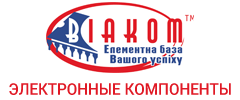Збирач потоків
ZX Spectrum 48k clone
 | I’ve been working on this project for a while, and I’d like to share the progress here. I hope it will be interesting.This is ZX Spectrum 48k clone which I've designed and built myself. I've cheated a bit -- it has no video circuitry, HDMI video signal is generated by ZX-HD extension board(visible at the far side of the motherboard, I've bought it online). Next steps is USB keyboard adapter and 3D printed case. [link] [comments] |
🍀 Інженерний тиждень «KPISchool»
Нарешті настала весна, а з нею і такі довгоочікувану канікули. І якщо погода за вікном ще не балує нас справжнім теплом, то КПІ ім.Ігоря Сікорського знає чим вас потішити.
Latching D-type CMOS power switch: A “Flip ON Flop OFF” alternative

The venerable Stephen Woodward recently published the design idea (DI) “Flip ON flop OFF” that converts a momentary push button to a classic push-on, push-off switch. Figure 1 is an attempt to go further still in terms of economy.
The circuit shown in Figure 1 utilizes only one half of a dual D-type package and one more capacitor to the original parts count. It also incorporates an RC power on set (or reset), to guarantee the initial state of the switch when power is applied.

Figure 1 U1A debounces SW1 via R1 & C2 so U1A can reliably toggle.
Wow the engineering world with your unique design: Design Ideas Submission Guide
The initial state of the switch is determined by the Set pin of U1A following the rising voltage on the power input due to the initial discharged state of C1. Capacitor C1 then charges towards ground leaving the flip-flop with the Q output high and the PMOS off.
Alternatively, this RC power on Set circuit can be wired to the Reset pin to change the initial power on state of the switch. The device ESD clamping diodes provide the capacitor discharge path when power is turned off.
The D-type flip-flop is essentially connected in the familiar way of Q-bar to D-input to form a bistable with each clock rising edge toggling the output state. However, in this case the combination of R1 and C2 form a delay network which prevents rapid changes on the D-input, thus effectively de-bouncing the switch by inhibiting state changes until C2 has charged/discharged to the state on the Q-bar output.
—Chris Nother built a discrete Tx/Rx for model aircraft at an early age, later discovering the dreaded “Mains Hum” in a home built “Dinsdale” Hi-Fi amplifier. Employed in R&D using the then newly available available CMOS logic from Motorola and Nat-Semi, career changes to Mainframe Computers, design of disk drive automated test equipment and storage solutions, finally turning full circle in retirement to the hobby that started it all.
Related Content
- Flip ON flop OFF
- Use an op amp as a set/reset flip-flop
- New VFC uses flip-flops as high speed, precision analog switches
- CMOS flip-flop used “off label” implements precision capacitance sensor
The post Latching D-type CMOS power switch: A “Flip ON Flop OFF” alternative appeared first on EDN.
Steel Soldering: Definition, Process, Working, Uses & Advantages
Steel soldering is a metal-joining process used to bond steel components by melting a filler metal with a lower melting point than the steel itself. Unlike welding, which fuses the base metals together, or brazing, which uses higher temperatures, soldering operates at relatively low temperatures (typically below 450°C or 840°F). This makes it suitable for delicate applications where excessive heat could damage the materials.
Soldering steel is more challenging than soldering other metals like copper or brass due to steel’s oxidation properties and lower thermal conductivity. To ensure a strong joint, fluxes and specialized soldering materials, such as tin-lead or silver-based alloys, are commonly used.
How Steel Soldering WorksSteel soldering follows a systematic approach that involves surface preparation, application of heat, and bonding with the help of solder and flux. The key principle behind the process is capillary action, where the molten solder flows into the microscopic gaps between metal surfaces, creating a strong mechanical and electrical bond.
The success of steel soldering depends on various factors, including the type of flux, the choice of solder alloy, and the precision of temperature control. Proper surface cleaning and oxide removal are crucial to achieving a reliable bond, as steel tends to develop an oxide layer that inhibits solder adhesion.
Steel Soldering ProcessThe steel soldering process consists of several essential steps. First, surface preparation is crucial. The steel surfaces must be cleaned thoroughly using sandpaper, steel wool, or chemical cleaners to remove dirt, grease, and oxidation. Once cleaned, an appropriate flux, such as zinc chloride or rosin-based flux, is applied to prevent oxidation and promote solder flow.
Next, selecting the right solder and flux is important. Lead-free solder alloys such as silver-based or tin-copper alloys are recommended for environmental safety. The flux should be compatible with the solder alloy to ensure proper wetting and adhesion.
The heating process follows, where a soldering iron, torch, or induction heating is used to bring the steel to the required temperature. Uniform heating is necessary to avoid weak joints and improper solder flow. Once the joint reaches the solder’s melting point, the solder wire or paste is introduced. The molten solder then flows into the joint through capillary action.
After soldering, the joint should be allowed to cool naturally without disturbance to prevent cracking. Once cooled, residual flux and oxidation are removed using warm water or specialized cleaning agents to ensure long-term durability.
Steel Soldering Uses & ApplicationsSteel soldering finds applications in a wide range of industries due to its ability to create strong, reliable joints at low temperatures. In the electronics and electrical industry, it is used in circuit boards, connectors, and electrical components where steel parts need reliable connections. It is also utilized for shielding applications for electromagnetic interference (EMI) protection.
In the automotive and aerospace industries, steel soldering is employed in small, heat-sensitive components, such as sensors and electrical connectors. Aerospace applications require precise soldering of critical parts to maintain structural integrity.
The HVAC systems and plumbing industries also benefit from steel soldering, particularly in joining refrigeration coils, pipe fittings, and heat exchangers. This method provides leak-proof and corrosion-resistant joints essential for efficient system performance.
Additionally, steel soldering is widely used in jewellery making and artistic metalwork. It allows artisans to create custom metal pieces, repair jewellery, and design decorative steel structures while maintaining an aesthetically pleasing finish. The medical industry also utilizes steel soldering in the manufacturing of surgical instruments and medical devices, ensuring precise and biocompatible metal bonding.
Steel Soldering AdvantagesSteel soldering offers several advantages over other metal joining methods, making it an ideal choice for specific applications. One major advantage is its low heat requirement. Unlike welding, which involves high temperatures that can cause warping or damage, soldering operates at much lower temperatures, preserving the integrity of delicate components.
Another significant benefit is its versatility. Steel soldering can be used on thin or intricate steel components without compromising their structural integrity. The process creates strong and reliable bonds that are resistant to corrosion, ensuring long-term durability.
Cost-effectiveness is another advantage, as soldering requires minimal equipment and energy compared to welding and brazing. This makes it an economical choice for small-scale manufacturing and repairs. Moreover, soldering is relatively easy to learn and perform, requiring minimal training and no specialized machinery, making it accessible to both professionals and hobbyists.
A notable safety advantage is that soldering does not require specialized protective equipment. Unlike welding, which necessitates protective gear against UV radiation and fumes, soldering is a safer process with fewer health hazards.
Steel Soldering DisadvantagesDespite its benefits, steel soldering has certain limitations. One major drawback is that soldered joints are not as strong as welded joints, making them unsuitable for high-load applications. Additionally, soldered joints have limited heat resistance and may fail under high temperatures, restricting their use in environments where elevated temperatures are a concern.
Another challenge is oxidation. Steel tends to form an oxide layer quickly, which can hinder solder adhesion. This requires the use of aggressive fluxes or pre-cleaning treatments to ensure a strong bond. Environmental concerns also arise with traditional lead-based solder, as it poses health and environmental risks, leading to a shift toward lead-free alternatives.
Lastly, some fluxes used in the soldering process leave corrosive residues that must be thoroughly cleaned to prevent long-term damage to the joint. Proper cleaning procedures are necessary to maintain joint integrity and prevent issues such as corrosion or weak bonding over time.
ConclusionSteel soldering is a valuable technique for low-temperature metal bonding, offering numerous advantages in electronics, automotive, HVAC, and medical applications. While it has certain limitations, proper material selection, surface preparation, and soldering techniques can help achieve strong and reliable bonds. As advancements in soldering technology continue, steel soldering is becoming even more efficient and environmentally friendly, making it a crucial method in modern manufacturing and repair industries.
The post Steel Soldering: Definition, Process, Working, Uses & Advantages appeared first on ELE Times.




